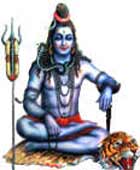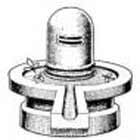Mahashivaratri is associated with Lord Shiva and is celebrated all over India. Shivratri
is observed as the night, when Lord Shiva danced the 'Tandav' -
his cosmic dance. Lord Shiva is portrayed as the Destroyer in the Hindu trinity (trimurti) along with
Brahma (the Creator) and Vishnu (the Preserver). Shiva is also known as Nataraja or
Nateswara (Lord of dance). Shiva is characterised by an angry temperament.
On the 14th Night of the dark half of the month Magh occurs the festival of
Shivaratri - the great night of Shiva. The devotees stay awake throughout
the night offering their prayers to Lord Shiva. A conch is blown to invoke
Shiva. They offer special
food made from the fruits of the season, root vegetables and coconut. Having observed the requirements
of the all night fast, devotees eat the prasad offered to Shiva. Special
celebrations are held in some of the major Shiva temples and Varanasi,
Kalahasti (Andhra Pradesh) and Chidambram (Tamil Nadu).
Shiva is also associated with Phallus (linga and yoni) worship. Linga
worship in effect means worship of the reproduction function.
In some part of India, apart from the fast which one
observes on that day and the special prayers that one offers to Lord
Shiva there is also another ritual. This is of fermenting bhang an
intoxicating beverage. Only when devotees intoxicated with bhang dance
to a feverish pitch is Mahashivaratri considered to have been celebrated
in its true 'spirit'.
Festivals and Fairs |
   |


